
The House of Tudor was an English dynasty that held the throne of England from 1485 to 1603. They descended from the Tudors of Penmynydd, a Welsh noble family, and Catherine of Valois. The Tudor monarchs ruled the Kingdom of England and the Lordship of Ireland for 118 years with five monarchs: Henry VII, Henry VIII, Edward VI, Mary I and Elizabeth I. The Tudors succeeded the House of Plantagenet as rulers of the Kingdom of England, and were succeeded by the House of Stuart. The first Tudor monarch, Henry VII, descended through his mother from the House of Beaufort, a legitimised branch of the English royal House of Lancaster, a cadet house of the Plantagenets. The Tudor family rose to power and started the Tudor period in the wake of the Wars of the Roses (1455–1487), which left the main House of Lancaster extinct in the male line.

Lady Margaret Beaufort was a major figure in the Wars of the Roses of the late fifteenth century, and mother of King Henry VII of England, the first Tudor monarch.

Margaret Plantagenet, Countess of Salisbury, was the only surviving daughter of George Plantagenet, Duke of Clarence, a brother of Kings Edward IV and Richard III, by his wife Isabel Neville. As a result of her marriage to Richard Pole, she was also known as Margaret Pole. One of the few members of the House of Plantagenet to have survived the Wars of the Roses, she was executed in 1541 at the command of King Henry VIII, the second monarch of the House of Tudor, who was the son of her first cousin, Elizabeth of York. Pope Leo XIII beatified her as a martyr for the Catholic Church on 29 December 1886. One of her sons, Reginald Pole, was the last Catholic Archbishop of Canterbury.

Katherine Seymour, Countess of Hertford was a younger sister of Lady Jane Grey.

Earl Mountbatten of Burma is a title in the Peerage of the United Kingdom, created in 1947 for Rear Admiral Louis Mountbatten, who in 1946 had been created the first Viscount Mountbatten of Burma. He was later promoted to Admiral of the Fleet.
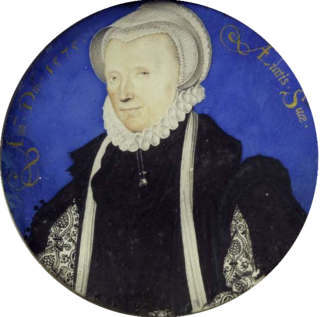
Margaret Douglas, Countess of Lennox, was the daughter of the Scottish queen dowager Margaret Tudor and her second husband Archibald Douglas, 6th Earl of Angus, and thus the granddaughter of Henry VII of England. She was the grandmother of James VI and I.

Victoria Eugenie of Battenberg was Queen of Spain as the wife of King Alfonso XIII from their marriage on 31 May 1906 until 14 April 1931, when the Spanish Second Republic was proclaimed. A Hessian princess by birth, she was a member of the Battenberg family, a morganatic branch of the House of Hesse-Darmstadt. She was the youngest granddaughter of Queen Victoria and Prince Albert. Unlike other members of the Battenberg family, who were accorded the lower rank of Serene Highness, Victoria Eugenie was born with the rank of Highness due to a Royal Warrant issued in 1886 by Queen Victoria.

Succession to the British throne is determined by descent, sex, legitimacy, and religion. Under common law, the Crown is inherited by a sovereign's children or by a childless sovereign's nearest collateral line. The Bill of Rights 1689 and the Act of Settlement 1701 restrict succession to the throne to the legitimate Protestant descendants of Sophia of Hanover who are in "communion with the Church of England". Spouses of Catholics were disqualified from 1689 until the law was amended in 2015. Protestant descendants of those excluded for being Roman Catholics are eligible.

Lady Mary Keyes was the youngest daughter of Henry Grey, 1st Duke of Suffolk, and Frances Brandon, and through her mother had a claim on the crown of England.
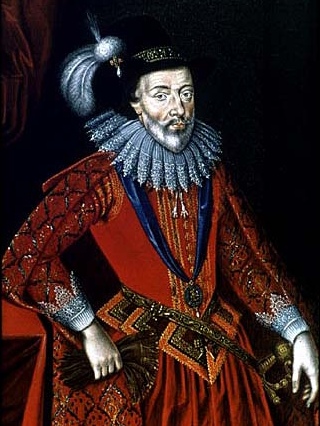
William Stanley, 6th Earl of Derby, KG was an English nobleman and politician. Stanley inherited a prominent social position that was both dangerous and unstable, as his mother was heir to Queen Elizabeth I under the Third Succession Act, a position inherited in 1596 by his deceased brother's oldest daughter, Anne, two years after William had inherited the Earldom from his brother. After a period of European travel in his youth, a long legal battle eventually consolidated his social position. Nevertheless, he was careful to remain circumspect in national politics, devoting himself to administration and cultural projects, including playwriting.

The House of Plantagenet was a royal house which originated in the French County of Anjou. The name Plantagenet is used by modern historians to identify four distinct royal houses: the Angevins, who were also Counts of Anjou; the main line of the Plantagenets following the loss of Anjou; and the houses of Lancaster and York, the Plantagenets' two cadet branches. The family held the English throne from 1154, with the accession of Henry II, until 1485, when Richard III died.

Frances Grey, Duchess of Suffolk, was an English noblewoman. She was the second child and eldest daughter of King Henry VIII's younger sister, Princess Mary, and Charles Brandon, 1st Duke of Suffolk. She was the mother of Lady Jane Grey, de facto Queen of England and Ireland for nine days, as well as Lady Katherine Grey and Lady Mary Grey.
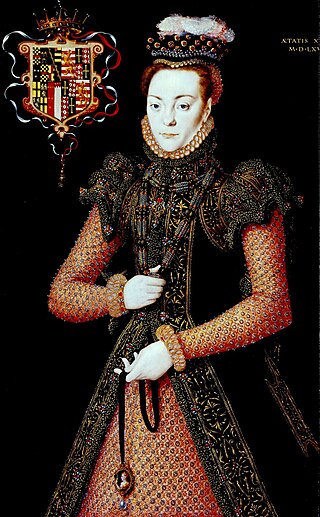
Eleanor Clifford, Countess of Cumberland, also known as Elyanore Clifford was the third child and second daughter of Charles Brandon, 1st Duke of Suffolk and Princess Mary Tudor, the Dowager Queen consort of France. She was a younger sister of Lady Frances Brandon and an elder sister of Henry Brandon, 1st Earl of Lincoln. She was also a younger paternal half-sister of Lady Anne Brandon and Lady Mary Brandon from her father's second marriage. After her mother's death in 1533, her father remarried to Catherine Willoughby and Eleanor became an elder half-sister of Henry Brandon, 2nd Duke of Suffolk and Charles Brandon, 3rd Duke of Suffolk.
Margaret Stanley, Countess of Derby was the only surviving daughter of Henry Clifford, 2nd Earl of Cumberland and Lady Eleanor Brandon. Her maternal grandparents were Charles Brandon, 1st Duke of Suffolk and Mary Tudor, Queen of France. Mary was the third daughter of King Henry VII of England and Elizabeth of York.
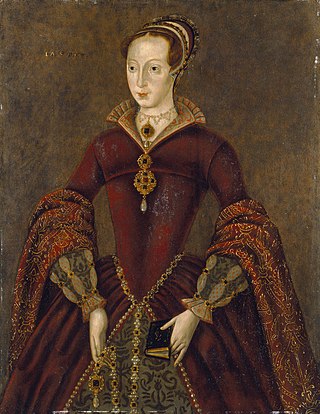
Lady Jane Grey, also known as Lady Jane Dudley after her marriage and as the "Nine Days' Queen", was an English noblewoman who claimed the throne of England and Ireland from 10 to 19 July 1553.

Cecily of York, also known as Cecelia, was the third daughter of King Edward IV of England and his queen consort Elizabeth Woodville.

Henry Clifford, 2nd Earl of Cumberland was a member of the Clifford family, seated at Skipton Castle from 1310 to 1676. His wife was Lady Eleanor Brandon, a niece of King Henry VIII.
British history provides several opportunities for alternative claimants to the English and later British Crown to arise, and historical scholars have on occasion traced to present times the heirs of those alternative claims.
Since William the Conqueror claimed the English throne, succession has been determined by bequest, battle, primogeniture, and parliament.
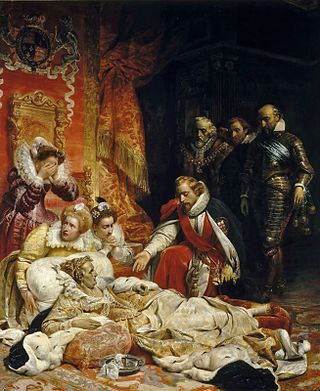
The succession to the childless Elizabeth I was an open question from her accession in 1558 to her death in 1603, when the crown passed to James VI of Scotland. While the accession of James went smoothly, the succession had been the subject of much debate for decades. It also, in some scholarly views, was a major political factor of the entire reign, if not so voiced. Separate aspects have acquired their own nomenclature: the "Norfolk conspiracy", Patrick Collinson's "Elizabethan exclusion crisis", and the "Secret Correspondence".
















